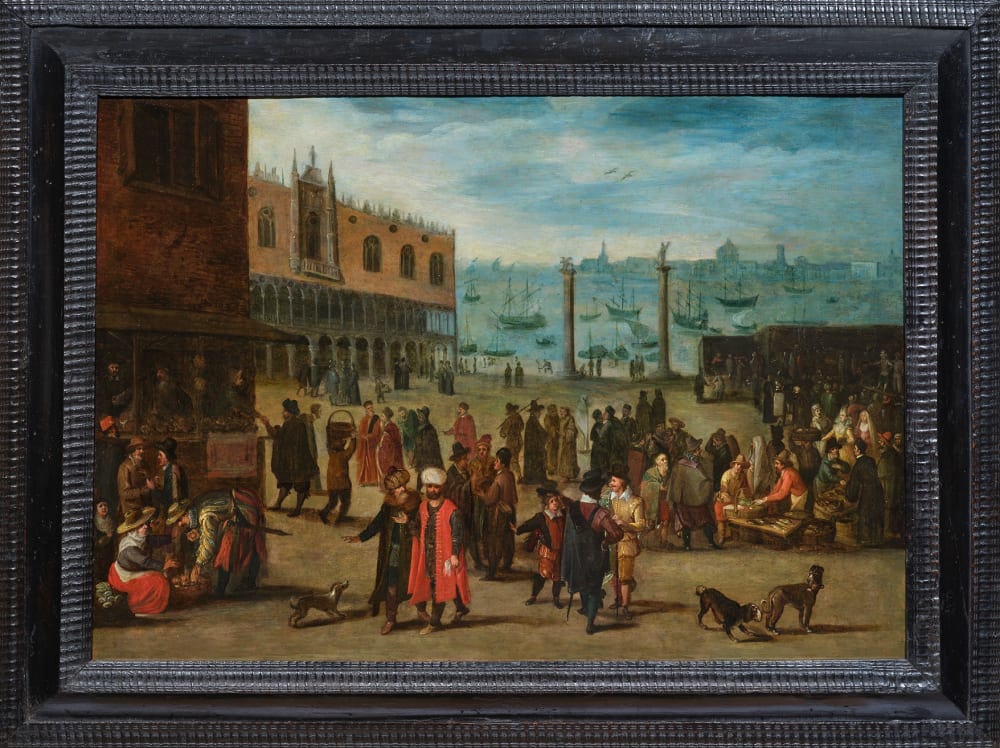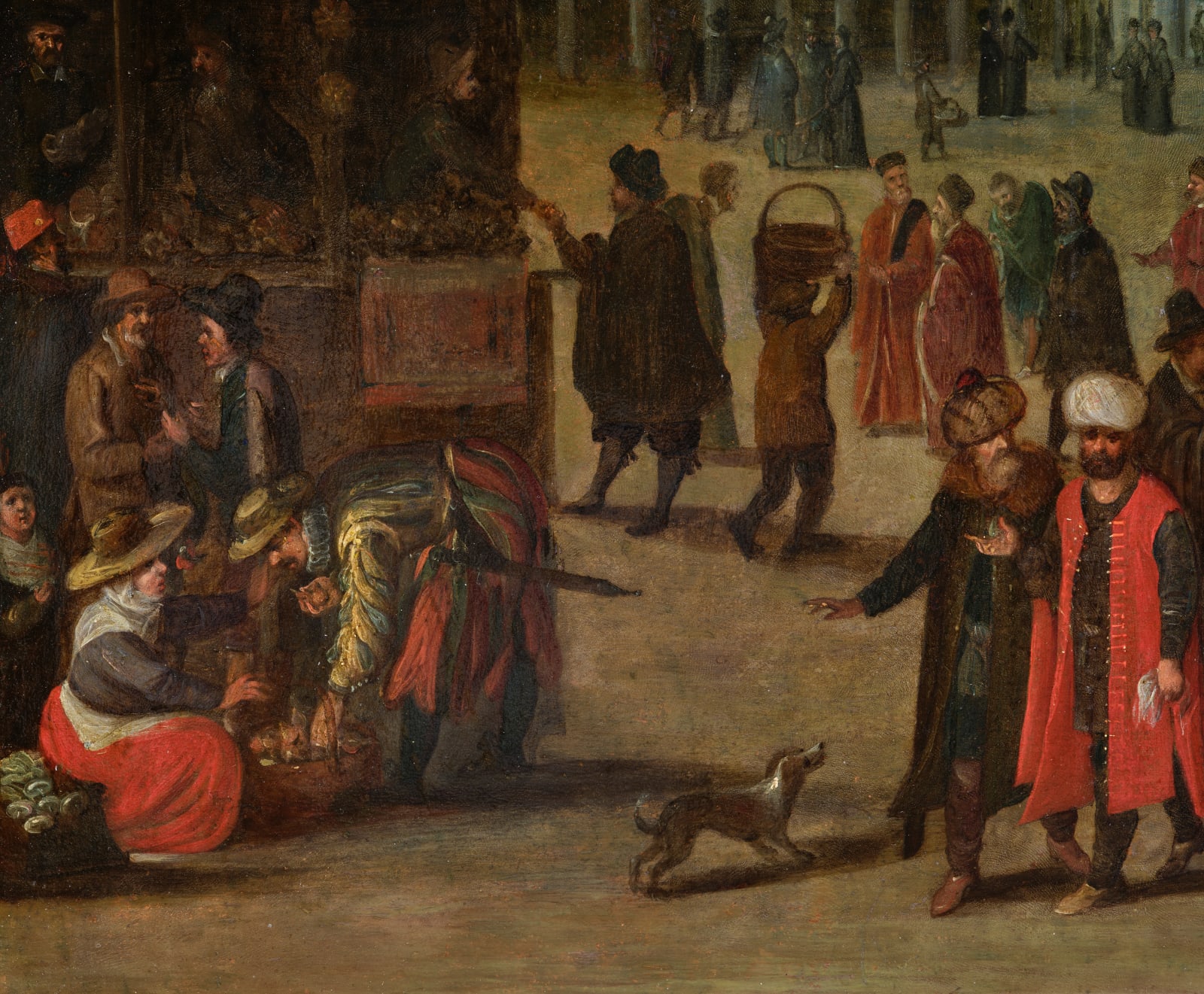
 Detail : vegetable seller
Detail : vegetable seller
 Detail : oriental characters and elegant men
Detail : oriental characters and elegant men
 Detail : fish market
Detail : fish market
 Detail : jugglers in the background
Detail : jugglers in the background
 Louis de Caullery - Winter Carnival Scene on a Flemish Square - sold in 2003 at Tajan
Louis de Caullery - Winter Carnival Scene on a Flemish Square - sold in 2003 at Tajan
Antwerp School of the 17th century/ Ecole anversoise du XVIIème siècle
39.2 x 56.3 cm
Further images
-
(View a larger image of thumbnail 1
)

-
(View a larger image of thumbnail 2
)

-
(View a larger image of thumbnail 3
)

-
(View a larger image of thumbnail 4
)

-
(View a larger image of thumbnail 5
)

-
(View a larger image of thumbnail 6
)

-
(View a larger image of thumbnail 7
)

-
(View a larger image of thumbnail 8
)

Provenance
Sotheby's London, 7 december 1994, lot 165This depiction of a market scene on the Piazzetta attracted us with its supple representation of Venice and the richness and diversity of the costumes, which blend Oriental and Venetian characters. While we recognize the Doge's Palace and the two columns of the Piazzetta, the perfectly imaginary features of the city depicted in the background and the muted light typical of Nordic atmospheres lead us to hypothesize that this is an evocation of Venice created in an Antwerp workshop around 1620.
This painting is one of the earliest representations by a Nordic painter of a view of Venice, half a century before those by Gaspard van Wittel and a few years after those by Louis de Caullery, another Nordic artist who had probably never been to Italy.
1. Description and related artworks
Two groups dominate the central foreground: on the left, two figures dressed in oriental garb are moving forward while discussing; on the right, a young man raises his hat to interrupt a conversation between two elegant men. The costumes of our Orientals (and particularly that of the character on the left) evoke those of the Magi in the Adorations of this period. It is possible that the artist drew inspiration from them, unless he used costume plates which were common at the time, or genuine Orientals he came across in the port of Antwerp, as a source of inspiration!
The two characters in ermine-trimmed red robes in the background are certainly Venetian senators, while a white-veiled woman on the right reminds us of Venice's economic and cultural ties with the Ottoman Empire.
Two market scenes frame this main scene on either side. On the left, we find vegetable vendors. Behind a merchant seated in the front row between a basket of mushrooms and a basket of onions, three merchants stand in their casemates built at the foot of the campanile and sheltered by a wide awning. The right-hand side of the painting represents the area devoted to the fish merchants. Throughout the composition, several points of light attract our eye and highlight certain characters. One of them, like a real ray of sunlight, makes the dress of an elegant woman sparkle as she strides through the crowd. Behind her, two jugglers mounted on the trestles of an improvised theater are drawing the attention of the onlookers crowded in front of them.
The atmosphere of this scene, its muted colors and the presence of jugglers in the background evoke another painting by Louis de Caullery, this carnival scene sold in 2003 at Tajan.
The presence of the Doge's Palace and the two columns lining the Piazzetta on the seaward side reminds us that we are in Venice and not in Flanders.
2. Framing
We framed our painting in a 17th-century Italian guilloché frame in blackened wood (in imitation of Dutch frames).

